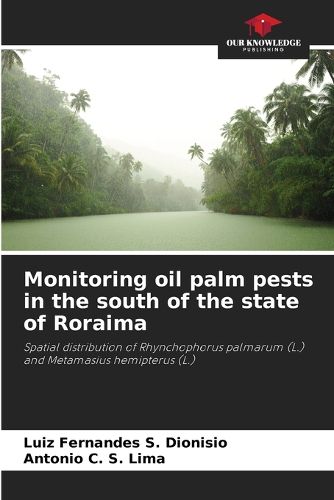Readings Newsletter
Become a Readings Member to make your shopping experience even easier.
Sign in or sign up for free!
You’re not far away from qualifying for FREE standard shipping within Australia
You’ve qualified for FREE standard shipping within Australia
The cart is loading…






This title is printed to order. This book may have been self-published. If so, we cannot guarantee the quality of the content. In the main most books will have gone through the editing process however some may not. We therefore suggest that you be aware of this before ordering this book. If in doubt check either the author or publisher’s details as we are unable to accept any returns unless they are faulty. Please contact us if you have any questions.
The oil palm (Elaeis guineensis Jacq.) or dendezeiro as it is known in Brazil, is a palm tree of African origin typical of tropical regions, and in Brazil, the largest cultivated areas are in the Amazon region. Oil palm is a crop that is very susceptible to pest and disease infestation. Among the pests that infest this oilseed are rodents and insects, and among the diseases, the red ring (AV), fusariosis or lethal scale (SL), fatal yellowing. In palm growing, phytosanitary problems related to attacks by insect pests have a significant economic impact, resulting in significant productivity losses. Among the insect pests found in the crop, Rhynchophorus palmarum L. (Coleoptera: Curculionidae) and Metamasius hemipterus L. (Coleoptera: Curculionidae) stand out. These beetles make galleries in the apical meristem of palm trees, causing a reduction in tillering and the opening of the holes can serve as a gateway for phytopathogens.
$9.00 standard shipping within Australia
FREE standard shipping within Australia for orders over $100.00
Express & International shipping calculated at checkout
This title is printed to order. This book may have been self-published. If so, we cannot guarantee the quality of the content. In the main most books will have gone through the editing process however some may not. We therefore suggest that you be aware of this before ordering this book. If in doubt check either the author or publisher’s details as we are unable to accept any returns unless they are faulty. Please contact us if you have any questions.
The oil palm (Elaeis guineensis Jacq.) or dendezeiro as it is known in Brazil, is a palm tree of African origin typical of tropical regions, and in Brazil, the largest cultivated areas are in the Amazon region. Oil palm is a crop that is very susceptible to pest and disease infestation. Among the pests that infest this oilseed are rodents and insects, and among the diseases, the red ring (AV), fusariosis or lethal scale (SL), fatal yellowing. In palm growing, phytosanitary problems related to attacks by insect pests have a significant economic impact, resulting in significant productivity losses. Among the insect pests found in the crop, Rhynchophorus palmarum L. (Coleoptera: Curculionidae) and Metamasius hemipterus L. (Coleoptera: Curculionidae) stand out. These beetles make galleries in the apical meristem of palm trees, causing a reduction in tillering and the opening of the holes can serve as a gateway for phytopathogens.